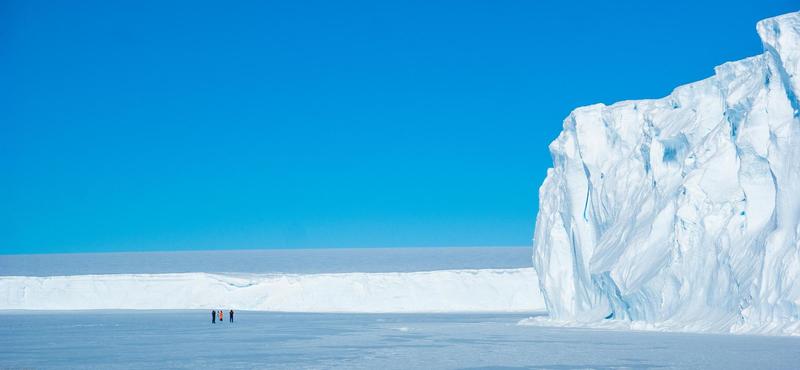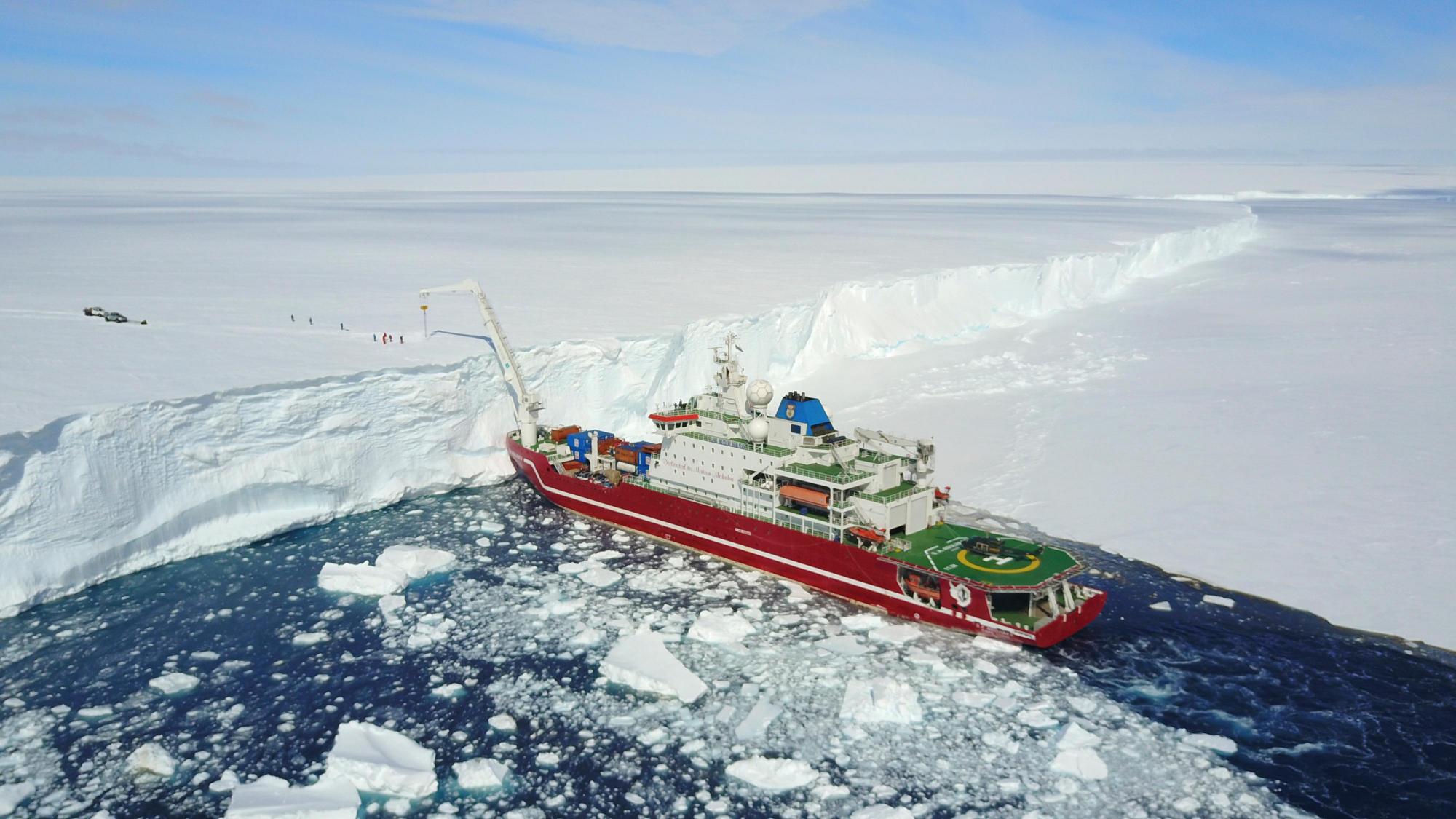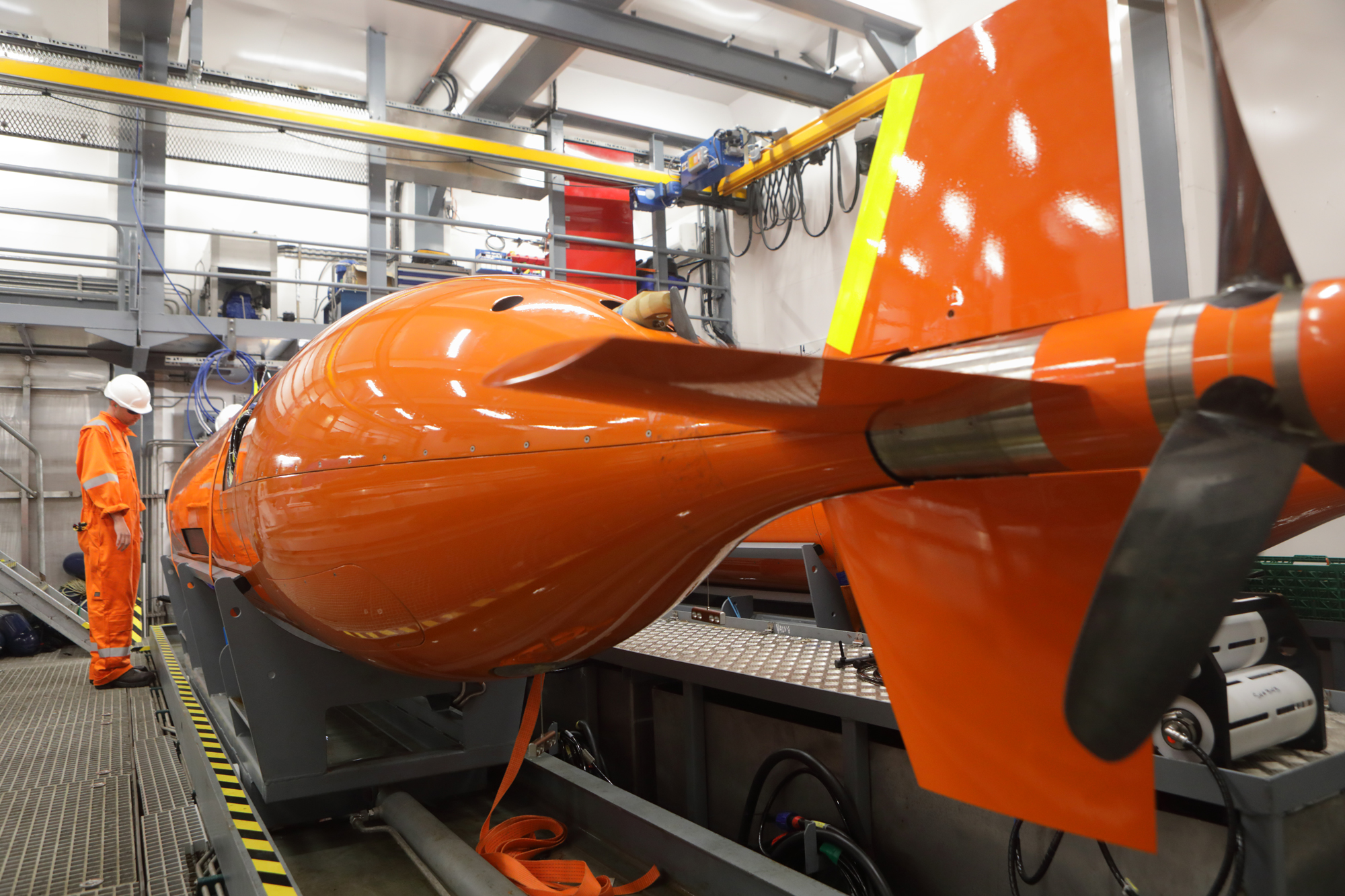UCT and the Weddell Sea Expedition
18 October 2018 | Story Ambre Nicolson Read time 9 min.
When the Weddell Sea Expedition departs for Antarctica next year, UCT oceanographers will be among those on board: Dr Sarah Fawcett, Dr Katherine Hutchinson and several UCT students. We found out why the expedition matters and what research they hope to accomplish while they’re in one of the most remote regions on the planet.
UCT was one of only a handful of institutions approached to participate in the Weddell Sea Expedition 2019. This almost unprecedented scientific expedition – a joint venture between organisations in the United Kingdom, the Netherlands, South Africa and New Zealand – hopes to survey the underside of the Larsen C Ice Shelf, document the marine wildlife of the Weddell Sea ecosystem and find the wreck of Sir Ernest Shackleton's ship Endurance, which sank there in 1915.
The scientists who make up the expedition will travel to the Weddell Sea at the edge of Antarctica aboard the South African vessel R/V SA Agulhas II during January and February 2019.
The scientists who make up the expedition will travel to the Weddell Sea at the edge of Antarctica aboard the South African vessel R/V SA Agulhas II during January and February 2019. Among the glaciologists, marine biogeochemists and archaeologists will be UCT oceanographers Dr Sarah Fawcett, who lectures in oceanography, and Dr Katherine Hutchinson, who recently completed her PhD.
“This will give us an unprecedented opportunity to investigate and explore one of the most remote and least-studied places on our planet,” says Associate Professor Isabelle Ansorge, head of the Department of Oceanography.

According to former head of the oceanography department at UCT, Emeritus Professor Geoff Brundrit, UCT’s involvement with the Weddell Sea Expedition recognises its long and growing expertise in the Southern Ocean. “UCT scientists have made a significant contribution to research in this area, both in the knowledge of the important processes at work in the Southern Ocean and for advancing understanding of their implications for global climate change.”
A window into time
According to Ansorge, the Weddell Sea is of importance to oceanographers because many of the waters and nutrients that control the structure and functioning of ocean systems originate in the area.
“Due to differing water densities the ocean is divided into layers,” she explains. “There is the bottom water, the deep water, the intermediate and the surface water. Just off Antarctica there is a water mass called the Antarctic bottom water, which forms along the shelf region in the Weddell Sea, and simply put, creates a waterfall effect down the side of the continental shelf due to its high density. This water mass then travels to all of the sea basins, so whatever happens there really influences the rest of the ocean.”
“This will give us an unprecedented opportunity to investigate and explore one of the most remote and least-studied places on our planet,” says Associate Professor Isabelle Ansorge, head of the Department of Oceanography.
Fawcett explains that this influence includes the transport of heat and gases, as well as nutrients, like phosphorus and nitrogen, which all ocean life require.
Fawcett and Hutchinson will be measuring all the physical characteristics of the area, from the salinity of the water to the temperature and carbon dioxide (CO2) concentrations. “While we are there, I will also be looking at the isotopes that are present,” says Fawcett. “The nitrogen isotopes, for example, will allow us to tease apart and thus better understand the different overlapping biological and chemical processes ongoing in the area.”
Fawcett will also be working with marine biologist Dr Tommy Bornman from Nelson Mandela University and the South African Environmental Observation Network to investigate the sea’s biological community and the rate of photosynthesis and nutrient cycling by its phytoplankton communities.
“We will be looking at questions like how the extended daylight hours affect photosynthesis and how quickly CO2 is being removed,” she says.

“The R/V SA Agulhas II is one of the most modern research ships on the planet, equipped with a huge array of cutting-edge scientific instruments,” says Fawcett. “While the expedition is in the Weddell Sea, scientists will also be flying drones over the ice as well as sending remotely controlled robotic autonomous vehicles under it.”
Tracking climate change
The Weddell Sea is the site of the Larsen Ice Shelves. The Larsen A and B ice shelves collapsed in 1995 and 2002, respectively, and in July 2017, one of the biggest iceberg calving events ever recorded took place when a piece of the Larsen C Ice Shelf broke off from the mainland.
Ice shelves are influenced both by what occurs in the water below them as well as the atmospheric conditions above them, making them particularly important bellwethers in understanding the rate of climate change.
“In the past we have been able to view the ice from above using satellite imaging and photographs taken from planes,” explains Fawcett. “But this will be a chance for us to examine the underside of the ice shelf, which is highly significant because evidence shows that the Weddell Sea is warming and these ice shelves are retreating at unprecedented rates.”
Ice shelves are influenced both by what occurs in the water below them as well as the atmospheric conditions above them, making them particularly important bellwethers in understanding the rate of climate change.
“The thing about the ice shelves is that if they melt, they don’t raise sea levels themselves because they are already in the ocean. But if they go, then the ice behind them – on the land – is more likely to start flowing towards the ocean, displacing seawater as it enters the ocean, thus causing sea levels to rise,” explains Fawcett.
“Hopefully the team will be able to visit the chasm that has opened up between the ice shelf and the iceberg that broke off in 2017,” says Ansorge. “To visit such a place, at this time, and see what almost no-one else has seen is an awe-inspiring thought.”
 This story was published in the second issue of Umthombo, a magazine featuring research stories from across the University of Cape Town.
This story was published in the second issue of Umthombo, a magazine featuring research stories from across the University of Cape Town. Umthombo is the isiXhosa word for a natural spring of water or fountain. The most notable features of a fountain are its natural occurrence and limitlessness. Umthombo as a name positions the University of Cape Town, and this publication in particular, as a non-depletable well of knowledge.
Read the complete second issue online or subscribe and receive new issues in your inbox every few months.
 This work is licensed under a Creative Commons Attribution-NoDerivatives 4.0 International License.
This work is licensed under a Creative Commons Attribution-NoDerivatives 4.0 International License.
Please view the republishing articles page for more information.









